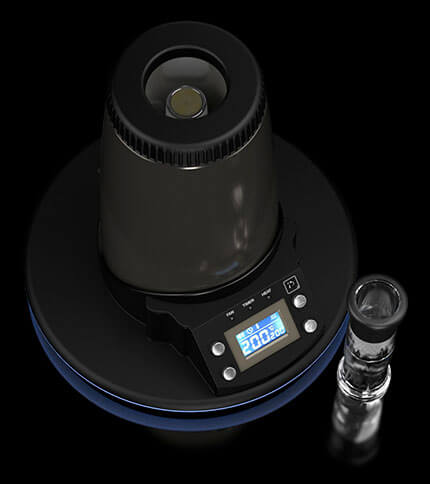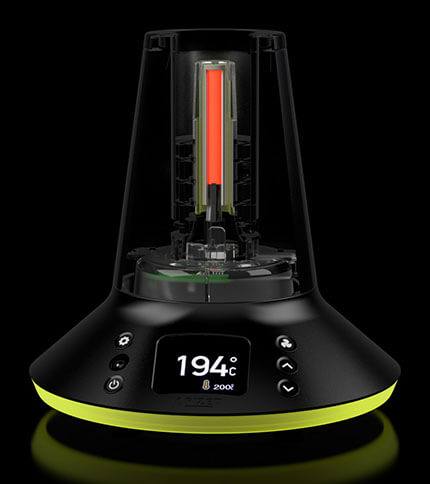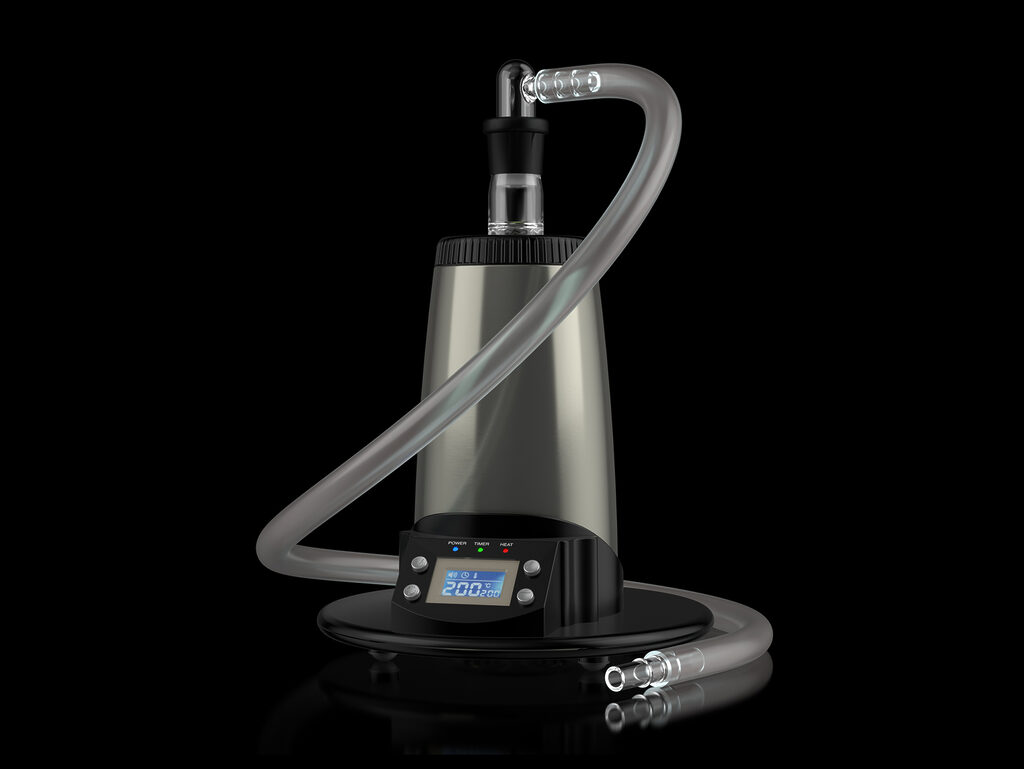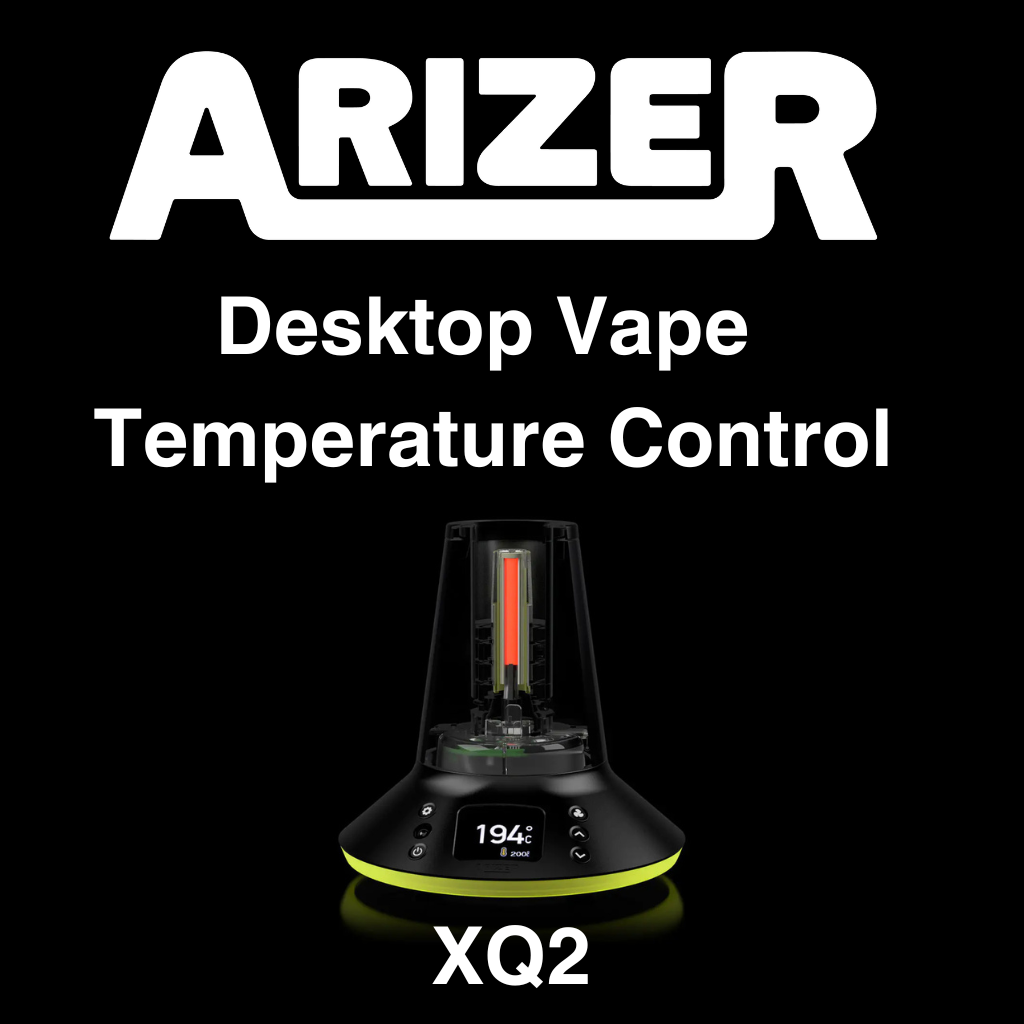
Understanding Desktop Vaporizer Temperature Control
Did you know that adjusting your desktop vaporizer’s temperature by just 10°F can dramatically change your vaping experience? It’s true! Welcome to the fascinating world of temperature control in desktop vaporizers. I’ve spent countless hours tinkering with these devices, and let me tell you, it’s a game-changer.
Whether you’re chasing flavor, potency, or smooth hits, understanding temperature control is your ticket to vaping nirvana. In this guide, we’ll dive deep into the science and art of precise heating, unlocking the full potential of your herbs.
A recent study by the Journal of Cannabis Research found that 78% of regular cannabis users reported a significant improvement in their vaping experience after learning to properly control their vaporizer’s temperature. That’s huge! So, are you ready to elevate your sessions? Let’s turn up the heat on our knowledge!
Understanding the science behind vaporization temperatures is like unlocking a secret level in your favorite video game – it opens up a whole new world of possibilities.
- Cannabinoid and Terpene Boiling Points:
- THC vaporizes around 315°F (157°C)
- CBD starts to vaporize at about 320°F (160°C)
- Terpenes like myrcene and limonene vaporize at lower temps (around 330°F or 165°C)
- Temperature and Vapor Quality:
- Lower temps (320°F-356°F): Light, flavorful vapor with subtle effects
- Mid-range (356°F-392°F): Fuller vapor with balanced flavor and potency
- Higher temps (392°F-428°F): Dense vapor with intense effects but less flavor
- The Entourage Effect:
- Different compounds vaporize at various temperatures
- Finding the right temp range can enhance the synergistic effects of cannabinoids and terpenes
- Combustion vs. Vaporization:
- Combustion typically occurs around 446°F (230°C)
- Staying below this prevents the release of harmful byproducts
- The sweet spot? Usually between 350°F-400°F (175°C-204°C) for most users
- Remember, folks – knowledge is power, and in this case, it’s also the key to some seriously awesome vaping sessions!
Now that we’ve got the science down, let’s talk tech, baby! The world of desktop vaporizers is like a buffet of temperature control options. Let’s dig in!
- Digital vs. Analog Control Systems: Note: All Arizer Desktops have digital control systems.
- Digital: Precise temp settings, often to the degree
- Analog: Dial-based, less precise but often more durable
- Precision Heating Technologies:
- Convection: Heats the air around your herb (like a convection oven)
- Conduction: Directly heats the herb (think frying pan)
- Hybrid: Combines both methods for balanced heating
- My two cents? Convection often provides more even heating, but hybrids are catching up fast!
- Smart Temperature Control Features:
- App integration for remote control is found in other manufacturers offerings
- Preset temperatures for different effects
- Temperature stepping programs
- Fun fact: Some new models even adjust temp based on your inhalation strength!
- Pros and Cons:
- Digital: Precise but can be more prone to electronic failures
- Analog: Simple and reliable but less precise
- Smart systems: Feature-rich but may have a steeper learning curve
Whew! That’s a lot to take in, right? But trust me, once you find the right temperature control system for your style, it’s like finding the perfect dancing partner – everything just flows!
Remember, the best system for you depends on your personal preferences. Are you a tech wizard who loves to fine-tune every detail? Or do you prefer the simplicity of “turn it on and go”? There’s no wrong answer here, just what works best for you and your vaping journey.
Keep in mind that all Arizer desktop vaporizers have 1 degree digital temperature control and it is extremely accurate, making for a perfect session every time!
In our next sections, we’ll explore optimal temperature ranges for different effects and dive into some pro techniques for mastering temperature control. Get ready to become a vaporizer virtuoso!
Now we’re getting to the good stuff! Temperature is like a mood ring for your vape session. Let’s break it down:
- Low-temperature vaping (320°F-356°F): The flavor chaser’s paradise
- Effects: Mild, clear-headed, and focused. Perfect for creative sessions.
- Flavor: This is where terpenes shine! Expect bright, crisp flavors.
- Vapor quality: Light and wispy. Don’t expect big clouds here.
- Best for: Daytime use, microdosing, or when you want to be productive.
I love starting my day with a low-temp session. It’s like a gentle, flavorful wake-up call for my senses!
- Mid-range temperatures (356°F-392°F): The Goldilocks zone
- Effects: Balanced body and mind effects. You’ll feel it, but you won’t be glued to the couch.
- Flavor: Still tasty, but with a fuller body. Some of the more subtle notes might start to fade.
- Vapor quality: Medium density. You’ll see those satisfying clouds start to form.
- Best for: All-purpose use, social sessions, or when you want noticeable effects without going overboard.
This is my go-to range for hanging out with friends. It’s like the perfect background music – present but not overwhelming.
- High-temperature vaping (392°F-428°F): The heavy hitter
- Effects: Intense, full-bodied, and potentially sedating.
- Flavor: Robust but less nuanced. Some terpenes might be lost, but you’ll get fuller extraction of other important components.
- Vapor quality: Thick and milky. Cloud chasers, this one’s for you!
- Best for: Evening use, pain relief, or when you want powerful effects.
Customizing temperature for specific flavors and terpenes:
Here’s where you can really geek out:
- For CBD-dominant strains: Aim for around 356°F-410°F (180°C-210°C) to fully vaporize CBD without losing too many terpenes.
- THC focus: 315°F-330°F (157°C-166°C) for a clear-headed high, or go higher for more intense effects.
- Terpene targeting:
- Beta-caryophyllene (peppery): 246°F (119°C)
- Pinene (pine-like): 311°F (155°C)
- Linalool (floral): 388°F (198°C)
Pro tip: Try a temperature step-up technique. Start low for flavor, then gradually increase to extract different compounds. It’s like taking your taste buds and mind on a journey!
Remember, these are just guidelines. Your perfect temperature might vary based on the specific strain, your vaporizer, and your personal preferences. Don’t be afraid to experiment – that’s half the fun!
In my vaping journey, I’ve found that keeping a “vape journal” helps me remember which temperatures work best for different strains and effects. Give it a try – your future self will thank you!
It’s time to level up your temperature game! These techniques are like secret cheat codes for your vaping experience. Let’s dive in!
- Step-up vaping: gradually increasing temperature during a session
This technique is the vaping equivalent of a gourmet tasting menu. Here’s how to do it:
- Start low (around 340°F/170°C) for those delicate flavors
- Take a few draws, savoring the terpy goodness
- Bump up 10-15°F every few minutes
- Keep climbing until you hit your sweet spot (usually around 390°F/200°C)
I once did a full 30-minute session using this method with a complex strain. It was like experiencing the entire flavor and effect spectrum in one go. Mind-blowing!
- Temperature surfing for consistent vapor quality
Think of this as riding the perfect vape wave:
- Set your vape slightly higher than your target temp
- Let it heat up, then turn it off or down
- Start drawing as the temperature falls to your ideal range
- Repeat when vapor quality dips
Pro tip: This works great with analog vapes that tend to fluctuate. It’s all about finding that temp rhythm!
- Using temperature control to conserve material
Who says you can’t be thrifty? Here’s the lowdown:
- Start with a lower temp (around 350°F/175°C)
- Take slow, gentle draws to extract efficiently
- Gradually increase temp as vapor production decreases
- Stop when the flavor turns “popcorn-y”
I’ve stretched a single bowl into multiple sessions using this method. It’s like getting free hits!
- Adapting temperature settings for different strains and concentrates
Not all herbs are created equal, folks. Here’s a quick guide:
- Dense, resinous buds: Start higher (370°F/188°C) to penetrate that thickness
- Fluffy, lighter strains: Lower temps (350°F/175°C) work well
- Concentrates: Begin around 380°F/193°C, adjust as needed
- Kief: Treat it gently! Start at 330°F/165°C and work your way up
Remember, every strain has its own personality. Don’t be afraid to experiment
Now, let’s talk about how temperature turns your vape sessions from meh to marvelous!
- How temperature affects vapor smoothness and harshness
It’s all about finding that Goldilocks zone:
- Too low (below 330°F/165°C): Wispy vapor, might feel unsatisfying
- Sweet spot (330°F-390°F / 165°C-200°C): Smooth, flavorful vapor
- Too high (above 420°F/215°C): Harsh, potentially irritating vapor
Personal anecdote: I once cranked my vape to max temp on a dare. Let’s just say my throat wasn’t happy with me. Lesson learned: respect the temp!
- Balancing flavor preservation with potency
Here’s the eternal vaper’s dilemma:
- Lower temps (330°F-370°F / 165°C-188°C): Terpene paradise, milder effects
- Mid-range (370°F-390°F / 188°C-200°C): Balanced flavor and potency
- Higher temps (390°F-420°F / 200°C-215°C): Maximum potency, less nuanced flavor
Pro tip: For the best of both worlds, start low and end high. It’s like a flavor rollercoaster that ends with a punch!
- Avoiding dry hits and combustion through proper temperature management
Nobody likes a surprise combustion party in their vape. Here’s how to keep things clean:
- Stay below 430°F/220°C to avoid combustion
- Stir your herb between hits for even vaporization
- Watch for changes in vapor color and taste
- When in doubt, start lower and work your way up
Trust me, your lungs will thank you for keeping things in the vape zone!
- The role of temperature in producing visible vapor clouds
For all you cloud chasers out there:
- Minimal clouds: Below 350°F/175°C
- Decent clouds: 350°F-390°F / 175°C-200°C
- Thick, milky clouds: Above 390°F/200°C
But remember, bigger isn’t always better. Some of the most potent hits I’ve had were nearly invisible!
Fun fact: Vapor visibility also depends on the ambient temperature and humidity. Ever notice how your clouds look bigger in cold air?
Here’s a mind-bending experiment: Try vaping the same strain at different temperatures throughout the day. It’s like experiencing multiple strains in one!
Remember, the perfect temperature is personal. It depends on your vaporizer, your material, and what you’re looking for in your session. Don’t be afraid to play around and find your own sweet spot.
And hey, if you’re ever in doubt, start low and slow. You can always turn up the heat, but you can’t un-vape that scorched bowl!
Happy vaping, temperature warriors! May your clouds be smooth and your flavors be ever in your favor!
Conclusion
And there you have it, fellow vapor enthusiasts – the ins and outs of temperature control in desktop vaporizers! We’ve journeyed through the science, explored techniques, and uncovered the secrets to tailoring your vaping experience.
Remember, the perfect temperature is a personal choice, so don’t be afraid to experiment. Whether you’re seeking flavorful terpenes or potent effects, your desktop vaporizer’s temperature dial is your paintbrush, and your herb is the canvas.
So, what temperature will you try in your next session? The world of precise, customized vaping is at your fingertips. Happy vaping, and may your vapor be ever smooth and satisfying!
-

XQ2
Rated 5.00 out of 5USD$269.99 Select options This product has multiple variants. The options may be chosen on the product page Quick View -
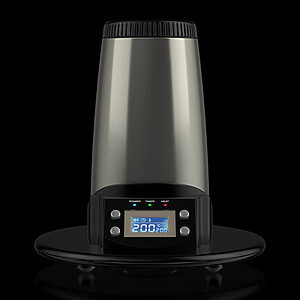
V-Tower
Rated 4.93 out of 5USD$129.99 Select options This product has multiple variants. The options may be chosen on the product page Quick View -
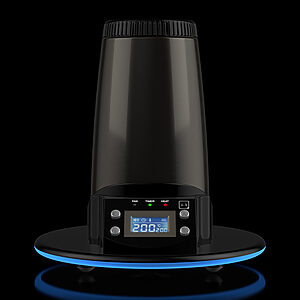
Extreme Q
Rated 4.96 out of 5USD$199.99 Select options This product has multiple variants. The options may be chosen on the product page Quick View
